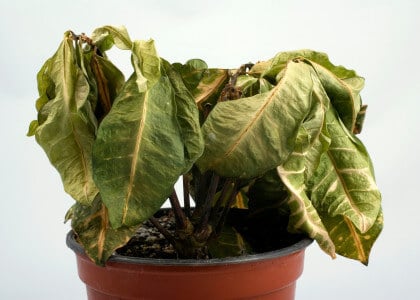Gardening, whether it’s flowers, trees, or vegetables, can seem rather simple. Getting a plant and digging a hole is easy, and it may seem like that’s all there is. However, most plants come with a tag that has details and specifications that have been carefully put together to give your plant optimum success. Here is a simple guide about how to follow the tags that come with plants, and also why to follow the specifications.
Lighting

The amount of sunlight plants get is critical to how well it grows and matures. If sun-loving plants are grown where there is more shade than sun or incomplete shade, they will never flourish. You will probably end up with a less-than-satisfactory result for your plant. When shade-loving plants are grown in direct sunlight, they will wilt and most likely die from the scorching sun.
PRO TIP: take a look at your surroundings before you plant. Is there a fence that will cast a shadow? A house? Taller plants or trees? Would it be a better place for sun-loving or shade-loving plants? If shade is something you need, consider tall shrubs, trees, or lawn decorations that can provide what shade-loving plants need to thrive.
Spacing

It’s very tempting to plant starter plants perhaps a bit closer together than what is called for. The important thing to remember is that many of the younger plants you will plant are not yet mature. So while it may not look at first like they need as much space in between plants as recommended, think ahead. When those plants are reaching maturity, or just growing bigger in general, they will need that space, otherwise, you’ll run into crowding.
PRO TIP: It’s better to have a bit more space in between your plants, than not enough. Groundcover or filler plants can always be added later, but if you plant too close together, there is just more work later on when you have to thin your crowded plants.
Depth

Depth is an important part of planting. If depth is too shallow, new plants can get washed out by rains, or they won’t be able to establish their roots deep enough to withstand the elements. If they are planted too deep, they are drowned by dirt and can’t get enough oxygen or light to survive.
PRO TIP: When you take your plant out of its container, a good rule of thumb is to plant it level with the soil that comes with the plant.
Watering

Some plants will require more watering than others and it’s important to know what your garden needs to grow beautifully. Too much watering will drown your plants, too little watering and they won’t succeed in your garden.
Details

Plants come with descriptions and other details that can be helpful long before you even purchase the plant. It’s wonderful to find a beautiful plant that is seemingly perfect, but if the plant can’t successfully grow in your area, it won’t stay perfect for very long. Do some research on what plants are great to grow in your area, and what plants you should maybe steer clear of. We’ve provided a Zone Hardiness Map on our website.

